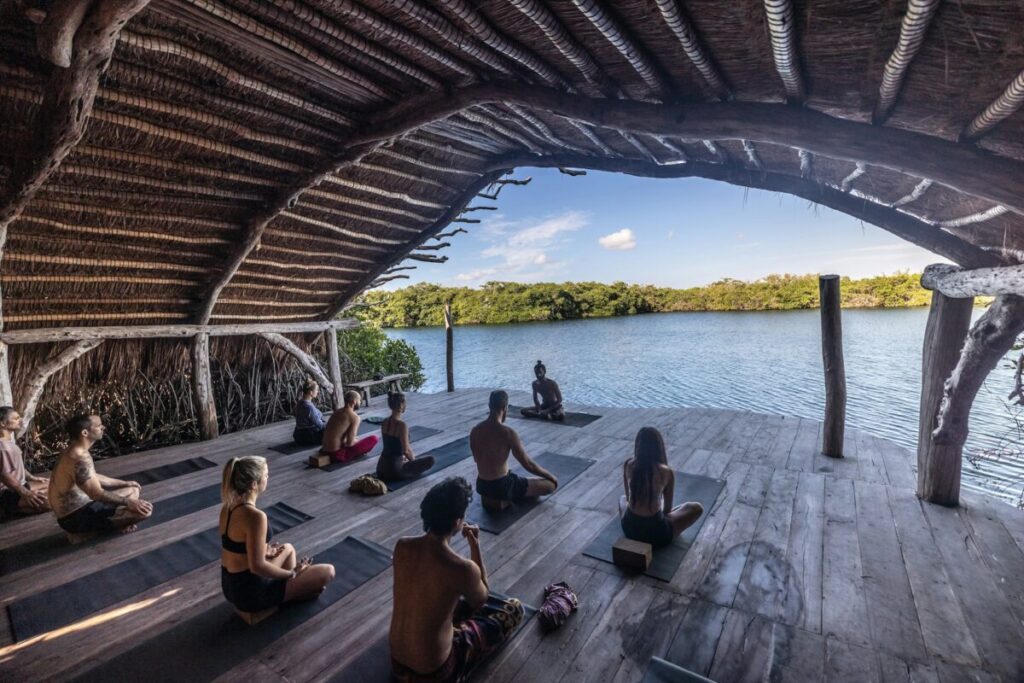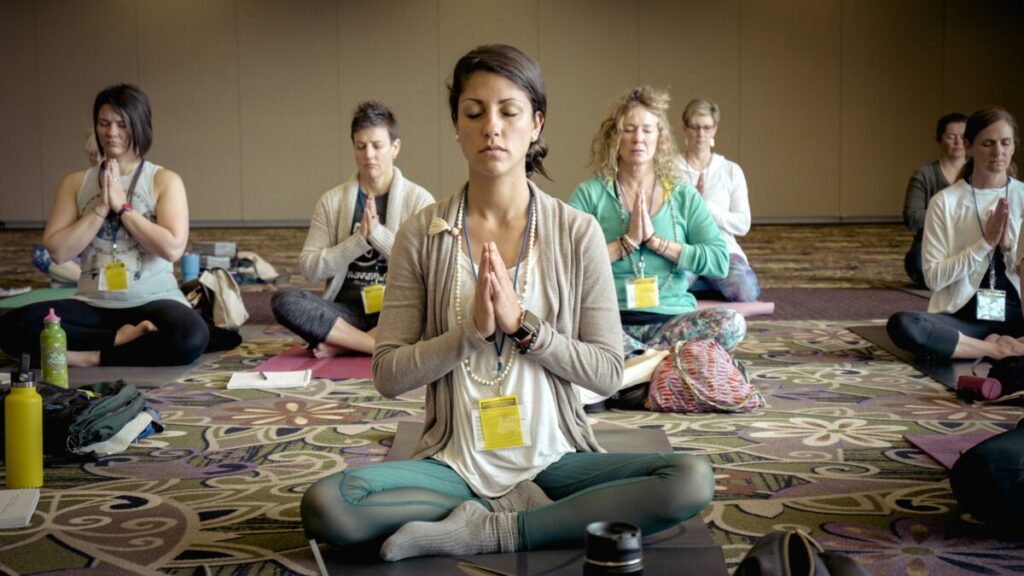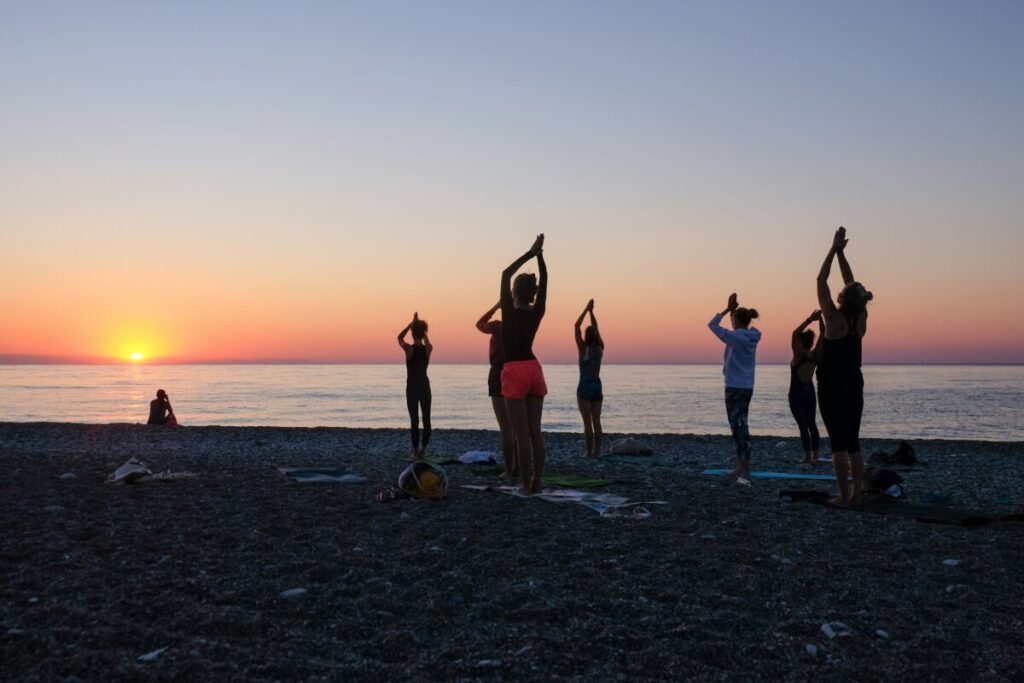In today’s fast-paced world, taking time for mental health has never been more important. A mental health sabbatical retreat offers a chance to step away from daily pressures and focus on healing. Whether you’re feeling burnout from work or simply need space to reset, planning a dedicated period for self-care can be transformative.
Planning a mental health sabbatical retreat requires identifying your specific needs, creating a supportive environment, and designing activities that promote genuine restoration.
The beauty of a mental health retreat is its flexibility – it can be a weekend at home with devices turned off or a month-long getaway at a dedicated wellness center. Search results suggest starting with clear goals for what you hope to achieve, whether that’s stress relief, improved health, or personal growth. Creating a technology-free experience can serve as a mini-sabbatical from emails and social media, giving your mind the break it desperately needs.
Key Takeaways
- Identify your specific mental health needs and set clear intentions before planning your sabbatical retreat
- Create a supportive environment by choosing the right location and possibly disconnecting from technology
- Include a balanced mix of restorative activities like meditation, nature walks, and creative pursuits
Understanding the Purpose of a Mental Health Sabbatical Retreat

A mental health sabbatical retreat serves as a purposeful break from everyday life to focus on healing and renewal. This dedicated time away helps you reconnect with yourself, address burnout, and cultivate lasting emotional wellness practices.
Personal Growth and Renewal
Taking a mental health sabbatical is about creating space for deep personal growth. Unlike regular vacations, these retreats offer structured time to reflect on your life journey and explore new aspects of yourself.
Many people discover hidden talents or forgotten passions during their sabbatical journey. You might find yourself drawn to creative pursuits, mindfulness practices, or nature exploration that you never had time for before.
The beauty of a dedicated mental health retreat lies in its intentionality. You’re not just escaping problems – you’re actively working on building a stronger foundation for your future self. This purposeful break allows your mind to reset and gain fresh perspectives on challenges that once seemed overwhelming.
Consider setting specific personal development goals before your retreat. Maybe you want to deepen your meditation practice, learn stress management techniques, or simply reconnect with your authentic self.
Personal Development Versus Burnout Prevention
While personal development focuses on growth, burnout prevention addresses healing from exhaustion. A well-designed sabbatical addresses both needs.
Signs you might need a burnout-focused retreat include constant fatigue, emotional numbness, decreased productivity, and feeling disconnected from things you once enjoyed. Don’t wait until you’re completely depleted to take action!
For burnout prevention, prioritize activities that restore your energy rather than drain it. This might include:
- Plenty of unstructured rest time
- Technology breaks from emails and notifications
- Gentle physical movement like walking or yoga
- Time in nature
- Quality sleep without alarms
Personal development elements can include journaling exercises, skill-building workshops, or creative projects that spark joy and curiosity. The key is balancing restoration with gentle growth opportunities.
Emotional and Spiritual Benefits
A mental health sabbatical offers profound emotional healing by creating distance from triggers and stressors. This breathing room allows buried emotions to surface in a safe environment.
Many retreat-goers experience significant emotional shifts:
- Release of long-held tension and anxiety
- Renewed sense of purpose and meaning
- Greater emotional resilience
- Improved self-compassion
- Enhanced ability to set boundaries
The spiritual dimension of sabbaticals shouldn’t be overlooked, even if you’re not religious. A spiritual journey might involve connecting with something larger than yourself – whether that’s nature, community, or your own inner wisdom.
Simple spiritual practices like sitting quietly by water, watching sunrises, or writing gratitude lists can create transformative experiences. Many retreats incorporate guided meditation, labyrinth walks, or other contemplative practices that nurture spiritual wellbeing.
Setting Intentions for Your Retreat

Before diving into the practical aspects of your mental health sabbatical, it’s essential to clarify why you’re taking this time and what you hope to achieve. Setting clear intentions will guide your retreat experience and help you make meaningful progress toward inner peace and balance.
Clarifying Goals and Needs
Take some quiet time to reflect on what you truly need from this retreat. Are you seeking rest from burnout, clarity about a life decision, or healing from a difficult period? Write down specific outcomes you hope to achieve.
For example:
- Find 3 new stress management techniques I can use daily
- Reconnect with my creative passions
- Improve my sleep quality
- Reduce overthinking patterns
Be realistic about your timeframe. A weekend retreat might focus on rest and reflection, while a month-long sabbatical could address deeper patterns or life changes. Your goals should feel slightly challenging but achievable.
Remember that your needs might shift as your retreat progresses. Leave room for flexibility and discovery along the way.
Defining Personal Values
Your mental health retreat should align with what matters most to you. Identifying your core values helps create a meaningful experience rather than just following generic wellness trends.
Try this simple exercise: List 10-15 values that resonate with you (honesty, creativity, connection, etc.). Then narrow them down to the 3-5 that feel most essential right now.
Ask yourself:
- What qualities do I want to embody more fully?
- When have I felt most aligned and at peace?
- What principles would I like to guide my decisions?
Your values become your compass during challenging moments of your retreat. They’ll help you choose appropriate activities and set boundaries that support your wellbeing. For instance, if connection is a key value, you might include group meditation or sharing circles in your retreat plan.
Identifying Obstacles to Mental Wellness
Getting honest about what’s blocking your path to balance is crucial for a transformative retreat. What patterns, beliefs, or external factors are affecting your mental health?
Common obstacles might include:
- Work expectations and always being “on call”
- Difficulty setting boundaries with certain people
- Perfectionism or self-criticism
- Digital addiction or constant connectivity
- Unhealthy sleep or nutrition habits
For each obstacle you identify, brainstorm how your retreat can directly address it. If constant notifications drain your energy, plan for tech-free periods. If perfectionism is your challenge, include self-compassion practices.
Your retreat should create space to practice new ways of being. By acknowledging obstacles upfront, you can design experiences that specifically target these challenges and practice healthier alternatives.
Choosing the Right Retreat Type
Selecting the perfect mental health retreat can make all the difference in your healing journey. Different retreat styles offer unique approaches to wellness, with some focusing on stillness and introspection while others emphasize movement and physical wellness.
Meditation Retreats

Meditation retreats provide a peaceful environment for deep mental rest and self-discovery. These retreats usually include guided meditation sessions, mindfulness practices, and periods of silence. Many are held in serene settings like mountains or forests to help you disconnect from daily stress.
The structure varies from gentle introductions for beginners to intensive silent retreats lasting several days. Most programs include:
- Daily meditation sessions (2-4 times daily)
- Mindfulness walks in nature
- Educational talks on meditation techniques
- One-on-one guidance with experienced teachers
Meditation retreats are ideal if you’re seeking mental clarity and emotional balance. They teach valuable skills you can continue practicing at home after the retreat ends.
Yoga Retreats

Yoga retreats blend physical movement with mindfulness to create a holistic healing experience. These wellness-focused getaways typically include daily yoga classes suitable for various skill levels, from complete beginners to advanced practitioners.
Beyond yoga sessions, these retreats often incorporate:
- Nutritious, often vegetarian meals
- Breathwork (pranayama) exercises
- Optional massage or bodywork sessions
- Community connection through group activities
The physical practice helps release tension stored in your body while calming your mind. Many yoga retreats are held in beautiful locations with comfortable accommodations to enhance your relaxation experience.
Look for retreats that match your preferred yoga style—whether that’s gentle restorative practices or more vigorous vinyasa flows.
Deciding on Location and Environment

Your retreat location plays a crucial role in your mental health sabbatical experience. The right environment can enhance healing and reflection, while the wrong choice might create additional stress.
Seeking Solitude Versus Community Engagement
When planning your retreat, consider whether you need solitude or community support. Some people thrive in quiet, isolated settings where they can reflect and recharge without distractions. A private cabin in the mountains or a secluded beach house might be perfect if you’re seeking deep personal reflection.
Others find healing through connection. Community-based retreats offer structured group activities and shared experiences. These settings provide both professional guidance and peer support from others on similar journeys.
You might also consider a hybrid approach. Many wellness centers offer private accommodations with optional group activities, giving you flexibility to engage when you feel ready and retreat when you need space.
Selecting Destinations for Wellness
Natural environments often provide the most restorative settings for mental health retreats. Mountains, forests, beaches, and countryside locations offer calming scenery that can reduce stress hormones and improve mood.
Southeast Asia has become a popular destination for mental wellness retreats. Countries like Thailand, Bali, and Vietnam combine affordable vacation rentals with beautiful landscapes and wellness traditions.
When choosing your destination, consider:
- Climate preferences
- Travel distance and budget
- Local wellness resources
- Cultural experiences that interest you
- Safety and accessibility factors
For those seeking adventure alongside healing, look for locations that offer both relaxation and exploration opportunities. Many coastal areas provide peaceful beaches plus hiking, water sports, or cultural flights to nearby sites for day trips.
Planning the Structure of Your Sabbatical
A well-structured sabbatical helps you make the most of your mental health break. Planning specific elements like technology use, daily routines, and mindfulness practices creates a framework that supports your healing journey.
Digital Detox and Technology Boundaries
Let’s face it—our phones and laptops often contribute to burnout. Setting clear tech boundaries during your sabbatical is crucial for mental restoration. Consider:
- Designated tech-free zones in your retreat space (bedroom, meditation area)
- Scheduled check-in times for email/messages (once daily rather than constant checking)
- App deletion or restrictions for social media and work-related tools
- Nature-based alternatives to replace screen time
I’ve found that even a partial digital detox works wonders. During my sabbatical in Colorado, I checked messages just once daily at 4pm. This simple boundary helped me stay present instead of constantly responding to others’ needs.
Try using a basic alarm clock instead of your phone to avoid morning social media scrolling—this small change can transform your mornings!
Creating a Daily Routine
Structure provides comfort during times of healing. Your sabbatical routine should balance flexibility with consistency.
Start by identifying your natural energy patterns. Are you a morning person? Plan reflective activities then. Your daily framework might include:
- Morning rituals (journaling, stretching, tea)
- Mid-day active period (walking, swimming)
- Afternoon rest or creative time
- Evening wind-down practices
Keep your routine simple but intentional. The Healing Trust recommends “pursuing experiences that benefit your physical and mental health” rather than overscheduling your days.
Write your loose schedule somewhere visible, but give yourself permission to adjust as needed. Remember, this structure exists to support your healing, not to create new pressure.
Incorporating Mindfulness Practices
Mindfulness grounds your sabbatical experience in presence and awareness. These practices don’t require special skills—just your attention.
Simple practices to try:
- 5-minute morning breathing exercises
- Mindful walks where you notice 3 new things
- Body scan meditations before sleep
- Journaling about daily gratitudes
Many retreat-goers find spiritual practices particularly restorative. This might include prayer, meditation, or simply spending time in nature—whatever connects you to something larger than yourself.
Start small with just 5-10 minutes of mindfulness daily, then gradually extend the time. The goal isn’t perfection but presence. As one retreat participant shared, “The moments I spent just watching clouds became more healing than any elaborate practice I tried to force.”
Integrating Activities for Renewal

Planning meaningful activities for your mental health sabbatical can transform it from a simple break into a truly restorative experience. The right mix of activities helps you process emotions, tap into creativity, and connect with something larger than yourself.
Reflection and Introspection Techniques
Start each day with mindful meditation to ground yourself. Even 10 minutes can make a difference in your mental clarity. I’ve found that setting a specific time—like right after waking up—helps make this a habit that sticks beyond your retreat.
Journaling offers another powerful tool for processing thoughts. Try guided prompts like “What am I grateful for today?” or “What emotions am I experiencing right now?” These questions help direct your thinking when a blank page feels overwhelming.
Consider nature walks with purpose. Rather than just hiking, set an intention before you begin. Maybe you’ll focus on noticing five beautiful things or use the walk to think through a specific question. The combination of movement and natural surroundings often unlocks insights that stay hidden indoors.
Creative Expression Opportunities
Art therapy doesn’t require artistic talent—just willingness to express yourself. Pack simple supplies like colored pencils and a sketchbook. Try drawing your emotions or creating a visual representation of your ideal future.
Music and movement can release tension stored in your body. Create a playlist of songs that energize or calm you. Dance freely without worrying about technique. The physical release often brings emotional relief too.
Writing exercises beyond traditional journaling might include poetry, fiction, or letter writing. I’ve seen people write letters they never send—to their younger selves, to people they need to forgive, or to express feelings they’re working through.
For a structured approach, try morning pages—three pages of stream-of-consciousness writing first thing each day. This practice helps clear mental clutter before your day begins.
Volunteer Work and Giving Back
Local environmental projects offer a way to connect with nature while making a tangible difference. Beach cleanups, trail maintenance, or community garden work provide physical activity alongside purpose.
Skills-based volunteering lets you use your professional abilities in new contexts. If you’re a marketing professional, you might help a small nonprofit with their communications strategy for a few hours.
Virtual volunteering works well if you’re seeking quiet or have limited mobility. Options include online tutoring, transcription for accessibility projects, or digital advocacy work.
Look for one-time opportunities rather than ongoing commitments during your sabbatical. This allows you to experience the benefits of giving back without adding pressure to your schedule.
Remember that volunteering should energize, not drain you. Choose activities aligned with your values and energy levels to make sure they contribute to your renewal rather than becoming another obligation.
Finding Support and Expert Guidance

Planning a mental health sabbatical retreat becomes easier when you have the right people supporting you. Expert guidance can help you design a more meaningful experience and navigate challenges that might arise.
Hiring a Sabbatical Coach
A sabbatical coach can be a game-changer for your mental health retreat plans. These professionals specialize in helping you clarify your goals and create a structured approach to your time away. Look for coaches with experience in mental health retreats specifically.
When searching for the right coach, ask about their background and request testimonials from previous clients. Many coaches offer free consultation calls to see if you’re a good fit for each other.
Your coach can help with practical aspects like budgeting and scheduling, but their real value comes from helping you design experiences that address your specific mental health needs.
Some retreat centers like Ananda in the Himalayas offer built-in expert guidance as part of their programs. These experts can provide specialized support throughout your stay.
Don’t be afraid to interview several coaches before making your choice. The relationship needs to feel comfortable since you’ll be sharing personal information about your mental health goals.
Logistics and Preparation
Planning the practical aspects of your mental health sabbatical requires careful consideration of time, money, and personal responsibilities. Good preparation will help you fully immerse in the healing experience without worrying about loose ends back home.
Timeframe and Budgeting
Determining how long your mental health retreat will last is crucial. Short breaks of 3-7 days can provide a reset, while longer sabbaticals of 2-4 weeks allow for deeper healing work. Consider what your mental health needs truly require.
Your budget will shape many decisions. Create a spreadsheet with these key categories:
- Accommodation costs
- Transportation (flights, rental cars)
- Food and beverages
- Wellness activities (yoga classes, therapy sessions)
- Emergency fund (10-15% buffer)
If you’re traveling internationally, check if your health insurance covers you abroad. You might need to purchase travel insurance that includes mental health coverage for complete peace of mind. Compare travel insurance quotes that specifically mention mental health services to find appropriate coverage.
Consider off-season travel to save significantly on accommodations while enjoying less crowded spaces—perfect for reflection and healing.
Handling Responsibilities at Home
Before leaving, create a comprehensive list of recurring responsibilities that need coverage during your absence. This includes mail collection, pet care, plant watering, and bill payments.
Set up automatic payments for regular bills or delegate this task to a trusted person. For work responsibilities, clearly communicate your boundaries—decide if you’ll check email once daily or completely disconnect.
If you have children or dependents, arrange reliable care and create detailed schedules and emergency contacts. For pets, consider boarding or in-home pet sitting services.
Notify your neighbors of your departure and ask them to keep an eye on your property. Consider a home security system for additional peace of mind during your absence.
Prepare a folder with important documents and contact information for the person handling your affairs while you’re focused on healing.
What to Pack for a Mental Health Retreat

Pack intentionally for your mental wellness journey. Beyond basics like clothing and toiletries, include items that support your emotional well-being:
Essential Mental Health Support Items:
- Journal and pens for reflection
- Meditation cushion or yoga mat
- Comfort objects (photos, small keepsakes)
- Favorite books or e-reader
- Noise-canceling headphones for quiet space
Consider technology boundaries during your retreat. While staying connected may be necessary, bring a travel eSIM for affordable data if traveling internationally, but set limits on usage to maintain presence.
For travel comfort, invest in a quality backpack or travel bag with good organization to minimize stress while moving between locations.
Don’t forget practical items like medications (with extra supply), prescription details, and any therapeutic tools recommended by your mental health provider. Having these essentials readily available will help you focus on healing rather than logistics.
Frequently Asked Questions
Planning a mental health retreat comes with many questions about organization, activities, location, and budget. These practical concerns can make the difference between a truly restorative experience and one that creates more stress than it relieves.
What are the essential steps to organizing a successful mental health retreat?
Start by defining clear goals for your retreat. Ask yourself what you hope to achieve—stress reduction, personal growth, or simply disconnecting from daily pressures.
Create a realistic timeline, giving yourself at least 3-6 months to plan everything properly. This prevents last-minute stress that defeats the purpose of your wellness journey.
Choose participants carefully if planning a group retreat. The energy and compatibility of attendees greatly impacts the healing atmosphere you’re trying to create.
Develop a flexible schedule that balances structured activities with plenty of downtime. Too much programming can feel overwhelming, while too little might leave people feeling adrift.
Could you suggest effective activities to include in a wellness retreat itinerary?
Guided meditation sessions work wonderfully as both morning rituals and evening wind-downs. Even beginners find them accessible with proper instruction.
Nature walks or “forest bathing” connect participants with the natural world. These don’t need to be strenuous—simply being present outdoors provides remarkable mental benefits.
Journaling workshops give people tools for self-reflection. Provide prompts that encourage exploration of feelings, gratitude, and personal insights.
Movement practices like gentle yoga, tai chi, or simple stretching help release physical tension that accompanies mental stress.
Creative expression through art, music, or dance offers alternative ways to process emotions that might be difficult to verbalize.
What tips can you offer for finding the perfect location for a self-care retreat?
Look for places with natural beauty and minimal distractions. Settings near water, mountains, or forests naturally promote feelings of calm and perspective.
Check noise levels before booking. Even beautiful locations can be ruined by nearby construction, busy roads, or noisy neighbors.
Consider accessibility needs for all participants. Remote locations might be peaceful but challenging for people with mobility concerns.
Evaluate accommodation options carefully. Comfortable sleeping arrangements are crucial for mental restoration—this isn’t the time for roughing it unless that’s specifically what you’re seeking.
How much should I budget for when planning a retreat focused on mental well-being?
Expect to spend $150-$300 per day per person for a mid-range retreat experience. This typically covers accommodation, meals, and basic activities.
Factor in specialist fees if bringing in therapists, yoga instructors, or other wellness professionals. These can range from $200-$500 per session depending on expertise.
Transportation costs vary widely but can significantly impact your budget. Consider both getting to the retreat location and any excursions during your stay.
Allow for a contingency fund of about 15% of your total budget. Unexpected expenses always arise, and financial stress contradicts the purpose of your retreat.
What are the key considerations when developing a business plan for a wellness retreat?
Identify your unique value proposition. The wellness retreat market is growing, so clarity about what makes your offering special is essential.
Research local regulations regarding hospitality, food service, and wellness services. Compliance requirements vary dramatically by location.
Calculate realistic startup costs including property acquisition or rental, renovations, staffing, marketing, and insurance. Most retreat businesses require significant upfront investment.
Develop multiple revenue streams beyond just accommodation fees. Consider offering day passes, specialized workshops, or retail products to create sustainable income.
In what ways can I ensure that a mental health retreat is beneficial for all participants?
Gather detailed information about participants’ needs, expectations, and any health concerns before the retreat begins. This allows for thoughtful customization.
Provide clear information about what the retreat will and won’t include. Setting realistic expectations prevents disappointment and helps people prepare properly.
Create spaces for both community and solitude. Some healing happens in connection with others, while some requires private reflection.
Offer options for varying comfort levels with activities. What feels restorative to one person might feel challenging to another.

Leave a Reply